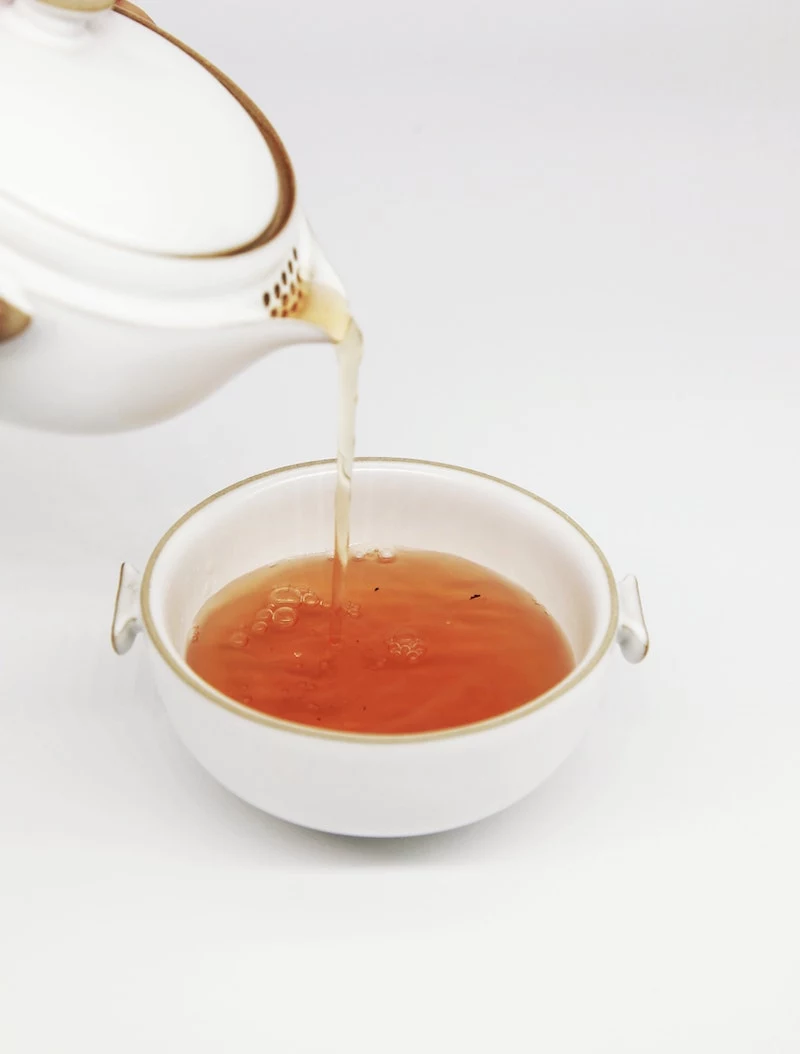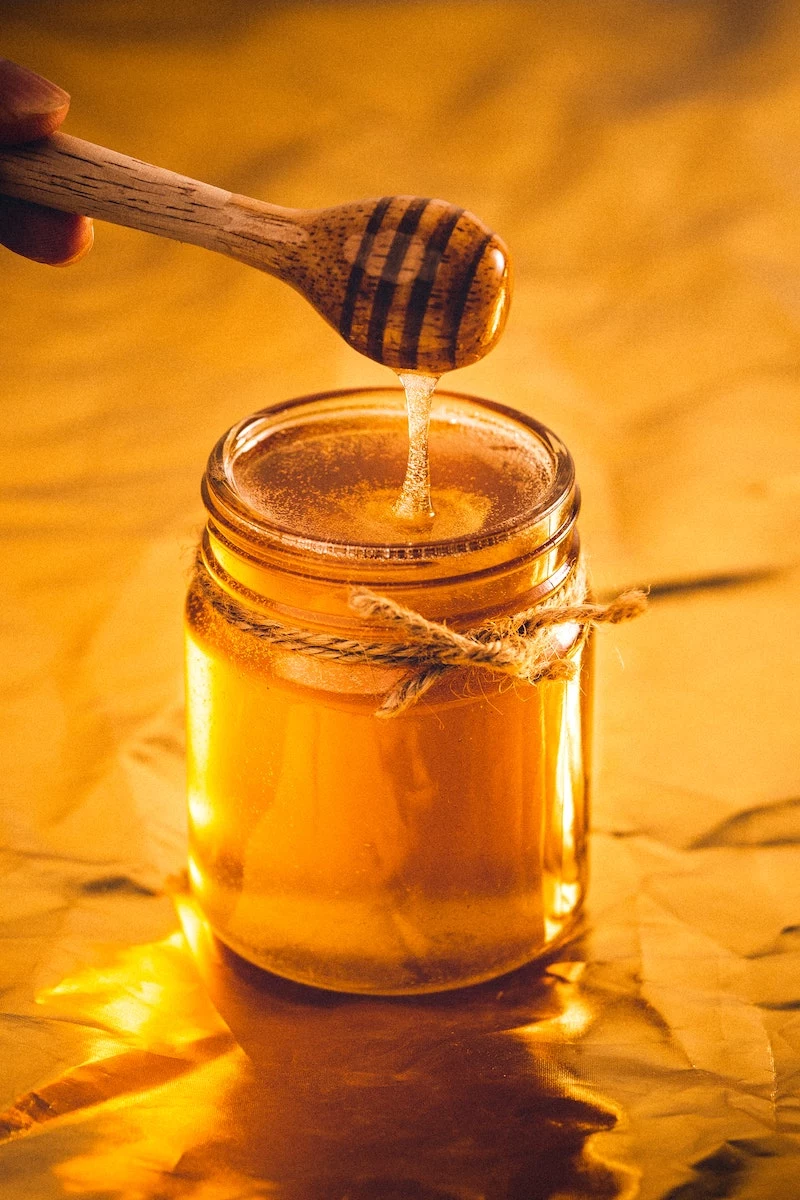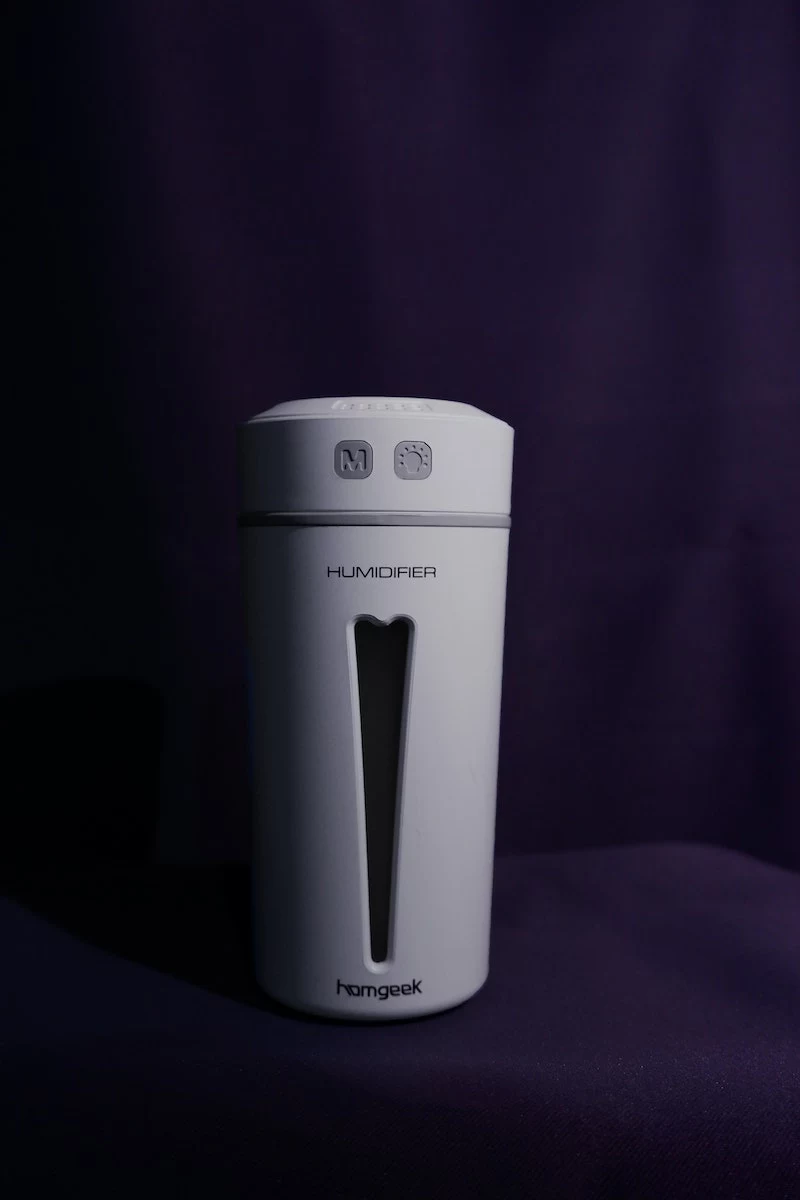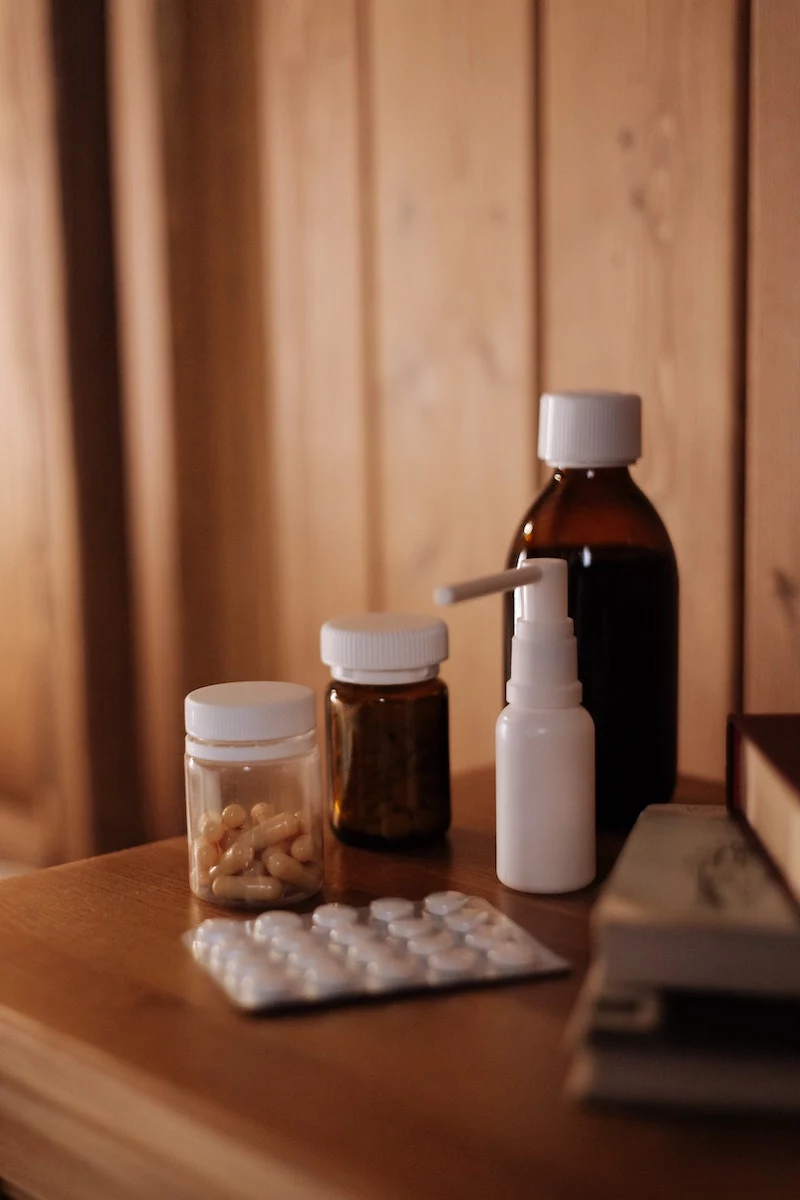Your Sore Throat Survival Guide: What Really Works (and What Doesn’t)
Let’s be honest, a sore throat is just miserable. It messes with your sleep, makes every swallow a chore, and can totally zap your energy. After spending years in the health field, I’ve seen hundreds of people walk in desperate for a magic pill to make it all go away instantly. I get it. But the first thing I always tell people is that real relief isn’t about a single quick fix. It’s about understanding what’s going on and giving your body the right tools to fight back.
In this article
Think of it this way: a sore throat is just your body’s alarm system. The medical term is pharyngitis, which is basically inflammation in the back of your throat. That inflammation—the redness, swelling, and pain—is a sign that your immune system is in a full-on battle with an invader, usually a virus, but sometimes bacteria or even just an irritant like dry air. So, our goal isn’t to shut off the alarm, but to manage the discomfort while our body’s defense team does its job.

This guide is the same practical, no-fluff advice I’ve shared time and time again. We’ll cover how to figure out what you’re dealing with, what remedies are actually worth your time, and—most importantly—when to wave the white flag and call a doctor.
First Things First: Know When to Call a Pro
Before you even think about home remedies, you need to do a quick check for red flags. Most sore throats are viral (think common cold) and go away on their own. But a small number are caused by bacteria, like the kind that causes strep throat, which often needs antibiotics to prevent things from getting worse.
Your body is pretty good at telling you when something is seriously wrong. If you experience any of the following, it’s time to stop self-treating and seek medical help right away:
- A high, persistent fever (around 101°F or 38.3°C).
- Any difficulty breathing or swallowing. This is an emergency, full stop.
- A red rash that seems to be spreading, which can be a sign of something more serious connected to strep.
- Severely swollen glands in your neck that are large and tender to the touch.
- White spots or pus on your tonsils. Grab a flashlight and look in the mirror; this is a classic sign of a bacterial infection.
- Symptoms that drag on for more than a week without any sign of improvement.
I once worked with someone who brushed off his sore throat for days, thinking he could tough it out. He finally came in when he could barely swallow his own saliva. A quick look revealed tonsils so swollen they were nearly touching. It was a serious case of tonsillitis that needed immediate medical care. That’s why spotting these red flags is step number one.

A Quick Strep Throat Gut-Check
While you can’t officially diagnose yourself, you can make a pretty good guess. Viral sore throats usually bring friends to the party: a runny nose, cough, and sneezing. Bacterial sore throats, on the other hand, often show up solo, with a sudden, intense throat pain and fever, but without all the other cold symptoms.
Here’s a little gut-check you can do at home, based on criteria that medical pros often use. Just ask yourself:
- Do I have a fever over 100.4°F? (That’s one point)
- Do I not have a cough? (Another point)
- Are the glands in my neck swollen and tender? (A third point)
- Can I see white spots on my tonsils? (A fourth point)
Heads up: This is NOT a diagnosis! But if you’re nodding along and scoring a 3 or 4, it’s a very strong signal that you should call your doctor’s office. Only a proper test can confirm if it’s strep.

The Foundation: Water and Air
Okay, so you’ve ruled out the scary stuff and are cleared for home care. Your first two missions are simple: hydration and humidity. The lining of your throat needs to be moist to do its job of flushing out germs. A dry, scratchy throat is a less effective one.
Warm liquids are your best friend here. The warmth soothes the inflamed tissue and can even boost blood flow to the area, which helps your immune system work faster. Good choices include caffeine-free herbal teas, clear broths, or just warm water with a little lemon. Steer clear of coffee and alcohol, which can dehydrate you, and acidic juices like orange or tomato juice, which can really sting.
And about the air? Dry air, especially in winter from central heating, is a major culprit. A humidifier puts moisture back into the air, which can be a game-changer, especially overnight. A cool-mist humidifier is generally the safest bet, particularly if you have kids or pets, as there’s no risk of burns. They cost anywhere from $30 to $60 at places like Target or on Amazon, and they’re worth every penny.

Pro Tip: You MUST clean your humidifier. I can’t say this enough. A dirty tank can grow mold and bacteria, and then you’re just spraying that into your air. Once a day, empty it, wipe it dry, and refill with fresh water (distilled is best to avoid mineral dust). Once a week, give it a deeper clean by swishing a solution of one part white vinegar to three parts water, then rinse thoroughly.
No humidifier? No problem! A great, zero-cost hack is to run a hot shower, close the bathroom door, and just sit in the steamy room for 15 minutes. Instant relief.
Time-Tested Remedies That Actually Work
Let’s move on to some active relief. These are the classics for a reason.
The Salt Water Gargle
Ever wonder why this simple trick works so well? It’s not just an old wives’ tale; it’s pure science. The inflamed tissues in your throat are swollen with fluid. The salt water is more concentrated than the fluid in those tissues, so through a process called osmosis, the water gets pulled out of your throat, which reduces swelling and pain. Cool, right? The perfect recipe is 1/4 to 1/2 teaspoon of table salt in 8 ounces of warm water. Gargle for 30 seconds, then spit. Doing this 2-4 times a day is plenty; any more can be drying.

Honey: Nature’s Soothing Syrup
Honey is a demulcent, which is a fancy word for something that creates a protective, soothing film. It coats the raw, irritated nerves in your throat, providing immediate relief. Research has even shown it can be more effective than some over-the-counter cough syrups. Just let a spoonful slowly trickle down your throat, or mix it into tea. And by the way, you don’t need to splurge on the $25 Manuka honey. For a sore throat, the $8 jar of raw, minimally processed honey from your local grocery store will do the coating job just fine.
CRITICAL Safety Note: Never give honey to a child under one year old. It can carry spores that lead to infant botulism, a serious illness.
Herbal Teas for Targeted Relief
Beyond just being warm and hydrating, some teas have specific benefits:
- Peppermint Tea: Contains menthol, which has a mild numbing and cooling effect.
- Chamomile Tea: Known for its anti-inflammatory and calming properties.
- Ginger or Licorice Root Tea: Both have natural anti-inflammatory properties that can help soothe irritated tissues.

Sometimes, the pain is just too much for home remedies alone. That’s what the pharmacy is for. Here’s how to choose wisely.
Pain Relievers: Ibuprofen vs. Acetaminophen
So you’re staring at the shelf, feeling fuzzy-headed. Which one do you grab? Ibuprofen (Advil, Motrin) is an anti-inflammatory, meaning it directly tackles the swelling that’s causing the pain. For that reason, it’s often the best first choice. Acetaminophen (Tylenol) is a fantastic pain reliever and fever reducer, but it doesn’t target inflammation in the same way. It’s a great option if you have a sensitive stomach or can’t take ibuprofen for other health reasons. Always read the label and stick to the recommended dose!
Lozenges & Sprays: Numbing vs. Soothing
You’ve basically got two choices here. Numbing lozenges and sprays have ingredients like benzocaine or phenol that temporarily deaden the nerves in your throat. These are great when the pain is so bad you can’t eat or sleep. Then there are soothing lozenges, which often use pectin or honey to coat the throat and menthol for a cooling sensation.

Did you know? The cooling effect from menthol doesn’t actually lower the temperature in your throat. It just activates specific nerve receptors that trick your brain into feeling cold, which helps override the pain signals.
Your Sore Throat Survival Kit (A Quick Shopping List)
To make it easy, here’s a quick list of what to grab on a pharmacy and grocery run:
- The Basics: Table salt (for gargling) and a jar of raw honey (~$8).
- For Hydration: A box of herbal tea like peppermint or chamomile (~$4).
- For Pain: A bottle of ibuprofen or acetaminophen (~$5-$10).
- For Direct Relief: A pack of numbing lozenges or a throat spray (~$6-$12).
- Easy-to-Eat Foods: Chicken broth, oatmeal, yogurt, eggs, and maybe some popsicles.
Finally, Eat Smart and Get Some Rest
This seems obvious, but it’s crucial. Stick to soft, easy-to-swallow foods. Think soups, scrambled eggs, mashed potatoes, and yogurt. Avoid anything hard, scratchy, or sharp, like chips or crusty bread. Cold foods like popsicles or ice cream can also feel amazing because they numb the area.

Here’s a sample one-day meal plan:
- Breakfast: Oatmeal swirled with honey.
- Lunch: Warm chicken broth with soft noodles.
- Dinner: Scrambled eggs and a side of mashed potatoes.
- Snacks: A popsicle, yogurt, or a smoothie.
And I really can’t stress this enough: REST. Your immune system needs a massive amount of energy to do its job. When you try to “push through it,” you’re stealing that energy. In my experience, the people who allow themselves a day or two of genuine rest get better so much faster. Your body knows what it’s doing. Your job is just to give it the support it needs.
Inspiration:

Is all honey created equal for a sore throat?
Not quite. While any raw honey can provide a soothing coat for your throat, some pack a bigger therapeutic punch. Manuka honey, from New Zealand, is prized for its high levels of methylglyoxal (MGO), a powerful antibacterial compound not found in such concentrations in other honeys. When buying, look for a UMF™ (Unique Manuka Factor) rating of 10+ from reputable brands like Comvita or Manukora to ensure you’re getting a potent, high-quality product. Think of standard honey as a comforting blanket and Manuka as the targeted medicine.










